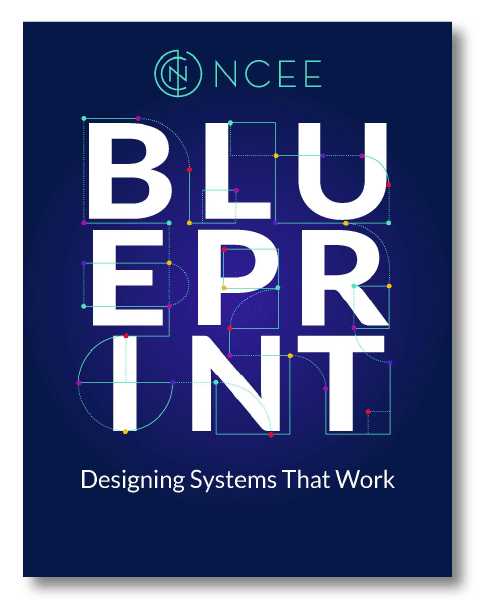We’ve been researching top education systems for nearly four decades—unpacking what they do, how they do it, and the challenges they face.
The NCEE Blueprint: Designing Systems That Work is the distillation of that research.
Designed for policymakers and education leaders, the NCEE Blueprint offers insights into the core components of successful systems, their dynamic interconnections, and how disparate elements come together to drive high levels of student performance.
It isn’t a step-by-step guide, but rather it highlights the strategies, structures, and qualities of systems that deliver high-quality, future-ready education for all learners.
Organized into four interconnected components, each with a forward-looking Anticipating the Future section, the NCEE Blueprint serves as a driver for dialogue and a springboard for possibility—helping leaders design education systems with the future not just in mind, but at their strategic heart.
The Blueprint is organized into four interconnected components:

Prepare Young People for Long Life Learning
Emphasizes fostering excellence from early childhood to graduation, creating meaningful, accessible pathways to life after school aligned to the demands of an evolving economy, and ensuring opportunities for learning and reskilling across extended lifetimes.

Cultivate High-Capacity, Forward-Thinking Educators
Focuses on treating educators—teachers and leaders—as key knowledge professionals, with strong investment in their development including transforming educator competencies given emerging technologies, expanded student outcomes, and the need to rethink time, space, and staffing.

Join Forces to Ensure Learners Thrive
Highlights bringing people and institutions together to support young people, blurring the lines between formal and informal schooling, and providing intentional support for developing fundamental skills and accelerated opportunities.

Thinking Differently About System Leadership
Points to the traditional fundamentals of leadership as the floor, no longer the ceiling, and highlights what is required of leaders given the pace of change in education and the economy.

